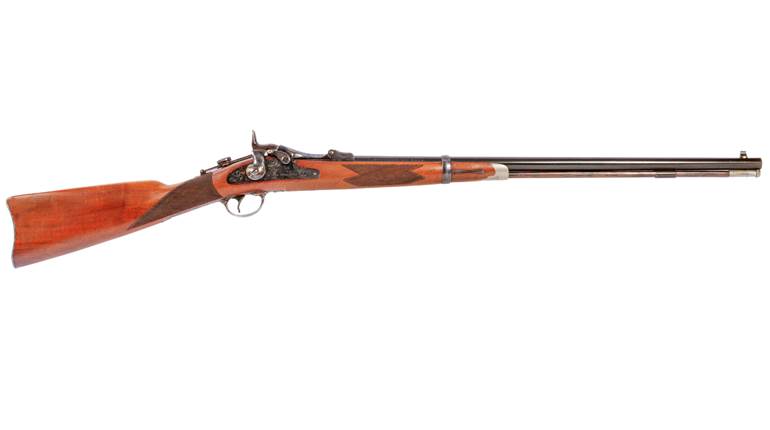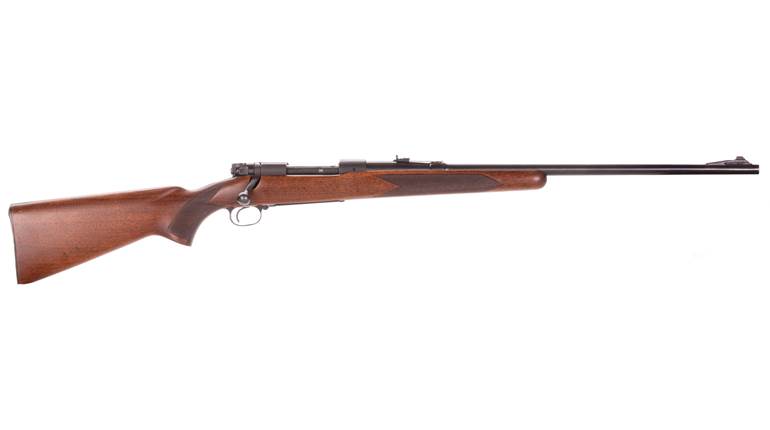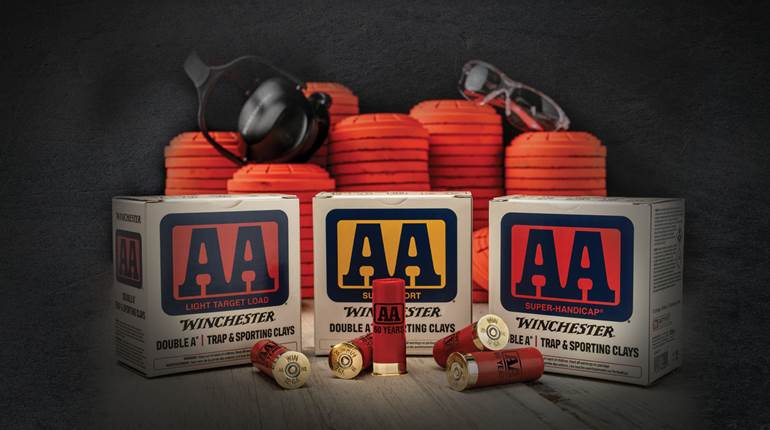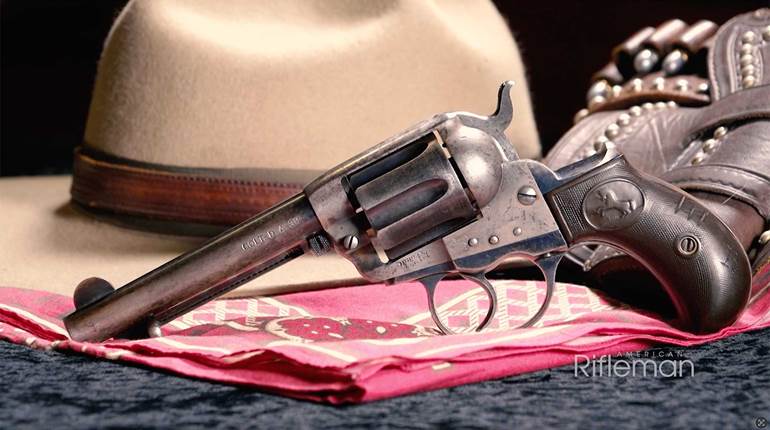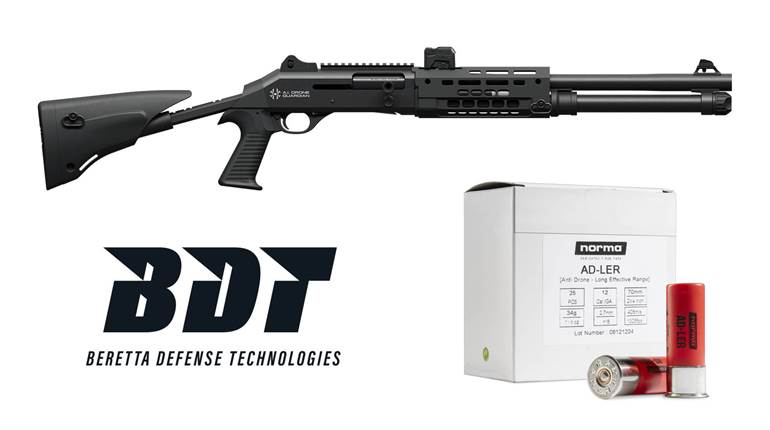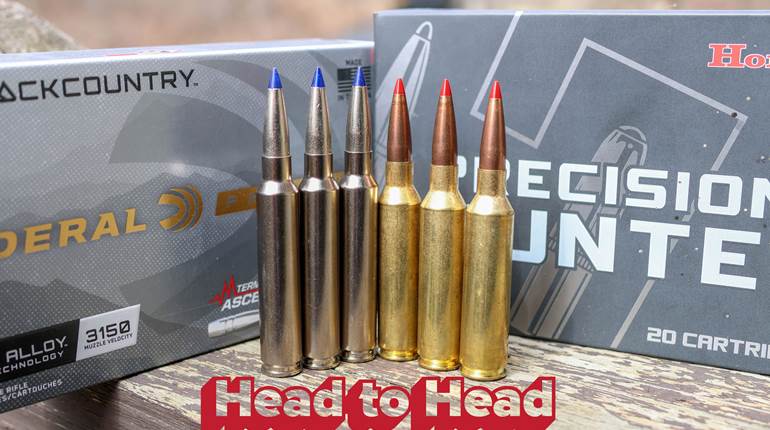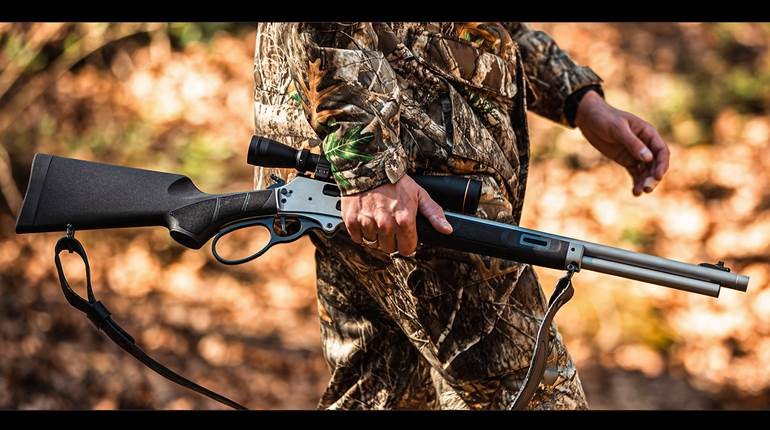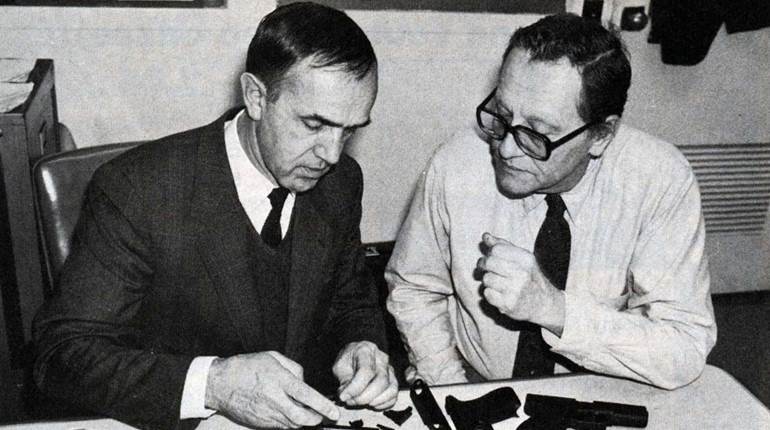
In becoming “The Gun That Won The West,” the Winchester Model 1873 also became the gun that put rapid-fire capability into the hands of shooters everywhere, and, in so doing, launched the Winchester Repeating Arms Co. into everlasting fame. Unfortunately, the Winchester ’73 had one notable drawback: Initially, it was chambered only for its proprietary .44-40 Win. cartridge (and subsequently for additional .38-40 Win. and .32-20 Win. chamberings). Thus, the short action that made the rifle so compact and versatile could only handle cartridges suitable for small-to-medium-size game.
Oliver Winchester soon realized he was missing out on the lucrative big-game hunting market, with sportsmen in pursuit of bison, bear and elk opting for harder-hitting single-shot rifles such as the 1874 Sharps and Remington Rolling Block. Adding to Winchester’s concern was that the most popular big-game cartridge in the country was then the .45-70 Gov’t, which was approximately twice as long as the .44-40 Win.
Saddled with the ’73s limited toggle-link action, Winchester’s most expedient solution, rather than design an entirely new firearm, was to lengthen and strengthen the already-existing Model 1873. This meant beefing up the receiver, barrel, stock and fore-end—hence the entire gun—to accommodate heftier cartridges.
Introduced to the public as part of Winchester’s elaborate display at the 1876 Philadelphia Centennial Exhibition, the resultant Winchester Model 1876 was appropriately christened “The Centennial Rifle.” Its first chambering was for the newly ordained .45-75 Win.—a cartridge not quite as long as the .45-70 but packing more punch, thanks to its slightly larger powder charge and lighter 350-grain bullet. Later chamberings were .45-60 Win. and .50-95 Win. in 1879 and .40-60 Win. in 1884. Standard guns were blued, deluxe models were casehardened and a plethora of options including engraving and checkering were made available.
Initially priced at $32 for the sporting rifle, $27 for the full-stocked carbine, $30 for the full-stocked musket and $35 for the half-magazine Express Rifle, the prices were 10 percent to 20 percent higher than the Winchester ’73, but nonetheless, the Winchester ’76 was met with enthusiasm among the big-game-hunting fraternity. Its accuracy, however, was another matter.
Major Ned Roberts, a prolific firearm author for many of the leading gun magazines of the day (including Arms And The Man, a forerunner of American Rifleman), wrote of the Model ’76, “ … with it I shot caribou, wolves and several moose. It had good killing power at moderate range, especially with the hollow-point bullet. The accuracy was fair, averaging about five-inch groups at 100 yards and 20 inches at 200.”
While not as accurate and lacking the long-range potential of many contemporary single-shots, the Winchester ’76—especially the 26" round-, octagon- or half-octagon-barreled .50-95 Express Rifle—found a ready audience among those in pursuit of dangerous game, not only in the United States, but in Africa and India, where some Express Rifles were special-ordered with 22" barrels. Packed with 95 grains of blackpowder behind a 300-grain full-metal-jacket, soft-lead or hollow-point bullet, the Winchester Sporting Rifle was a formidable firearm when fast follow-up shots might mean the difference between life and death.
Yet surprisingly, there were only 3,284 Express Rifles in .50-95 Win. produced out of a total of 63,799 Model 1876s made before being discontinued in 1897, resulting in it becoming an extremely rare and desirable version today.
This Third Model 1876 Express Rifle in .50-95, Serial No. 39581, was shipped by Winchester on Aug. 20, 1884, and is in 85 percent condition with a pristine bore. Unfortunately, the factory checkering has been refreshed and the original Beach combination front sight replaced with a German silver blade. Nonetheless, this Express Rifle is easily worth $12,500 to $14,500.
Gun: Winchester Model 1876 Express Rifle – Third Model
Chambering: .50-95 Win.
Serial No.: 39581
Manufactured: Aug. 20, 1884
Condition: NRA Excellent (Antique Gun Standards)
Value: $12,500 to $14,500












